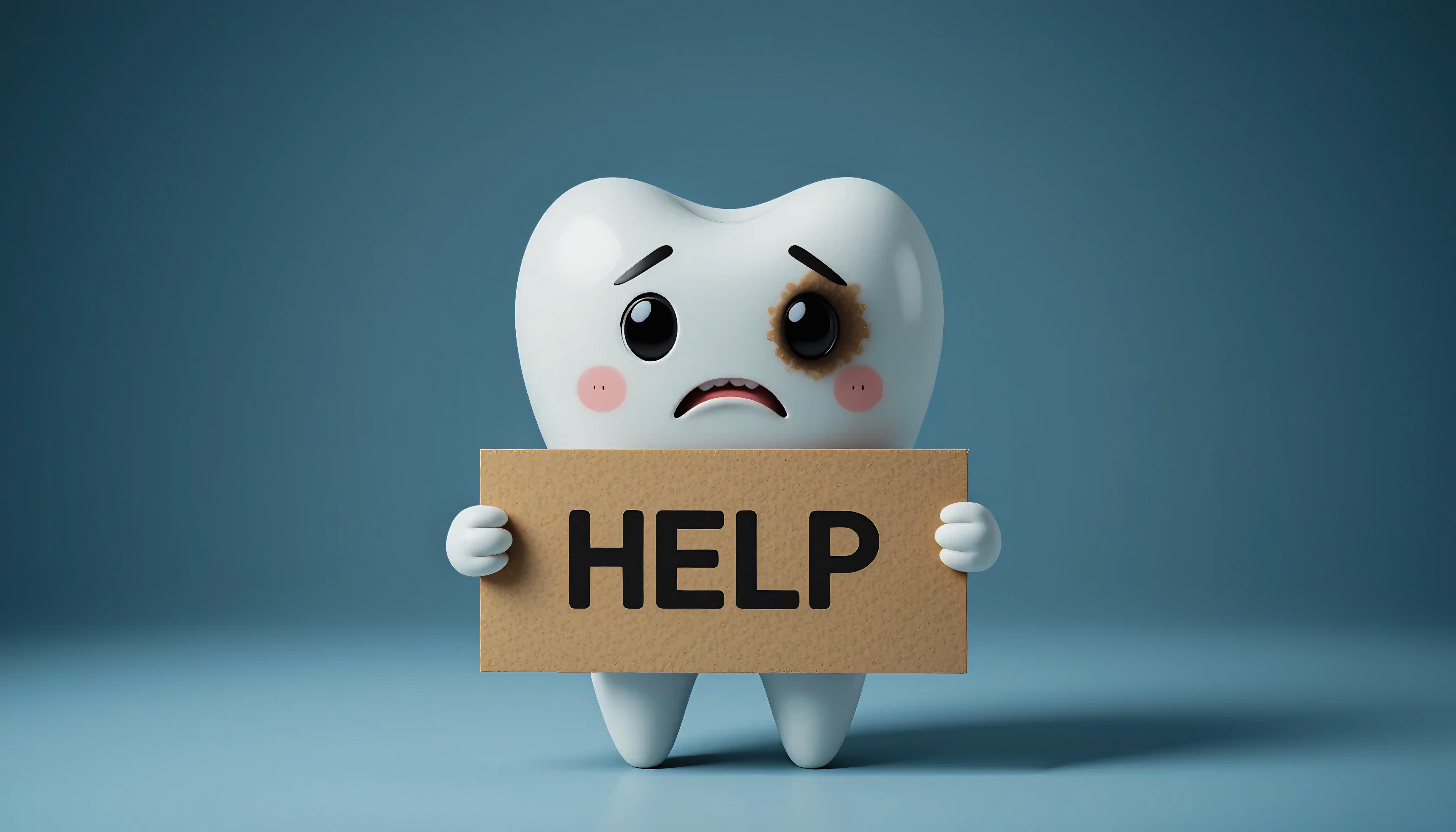Don’t Ignore These Red Flags: 5 Warning Signs of Gum Disease
Gum disease affects millions of Americans each year, yet many people don’t realize they have it until significant damage occurs. This silent condition begins with subtle changes in your mouth that are easy to overlook or dismiss as normal. Recognizing the early warning signs of gum disease is essential to protect your teeth and gums from permanent damage.
Early detection makes treatment more effective and less invasive. When caught in its initial stages, gum disease prevention becomes much simpler through improved oral hygiene and professional care. Healthy gums support strong teeth and contribute to your overall health and wellbeing.
Understanding these early signs of gum problems helps you take action before minor issues become major dental emergencies. Your mouth often provides clear signals when something isn’t right, and learning to recognize these symptoms can save your smile.
Bleeding Gums – The First Warning Sign
Healthy gums should never bleed during normal brushing or flossing activities. When you notice blood on your toothbrush or in the sink after oral care, your gums are sending you an important message. Bleeding gums indicate inflammation caused by bacterial buildup along the gum line.
Plaque accumulates daily on your teeth, especially in areas that are difficult to clean thoroughly. When plaque isn’t removed completely, it irritates gum tissue and causes inflammation known as gingivitis. This early stage of gum disease makes gums tender and prone to bleeding with gentle pressure.
Many people mistakenly believe that bleeding during brushing means they should brush more gently or avoid flossing. However, these warning signs of gum disease actually indicate the need for more thorough oral hygiene, not less. Proper plaque removal through consistent brushing and flossing helps reduce inflammation and bleeding over time.
The warning signs of gum disease often start with occasional bleeding that becomes more frequent without treatment. Early gum disease symptoms like bleeding should prompt immediate improvements to your oral care routine and a dental evaluation.
Swollen or Red Gums – Inflammation You Can See
Healthy gums appear pink and firm, fitting snugly around each tooth like a well-tailored collar. When gums become red, puffy, or swollen, they’re showing visible signs of infection and inflammation. This change in appearance indicates that bacteria are actively damaging gum tissue.
Gum inflammation occurs when your immune system responds to bacterial toxins produced by plaque buildup. The increased blood flow to fight infection causes the characteristic redness and swelling. Swollen gums may feel tender to touch and can make eating or brushing uncomfortable.
These warning signs of gum disease progress gradually, making them easy to ignore initially. Red, inflamed gums often accompany bleeding and may extend around multiple teeth as the condition spreads. The swelling can make it difficult to clean teeth properly, creating a cycle that allows more bacteria to accumulate.
Without treatment, swollen gums causes more serious complications including gum recession and bone loss. Recognizing these warning signs of gum disease early allows for effective intervention before permanent damage occurs.
Receding Gums – A Subtle but Serious Sign
Gum recession occurs when gum tissue gradually pulls away from teeth, exposing more of the tooth surface and root area. This process happens slowly, making it one of the more subtle warning signs of gum disease that people often don’t notice until it becomes significant.
When gums recede, teeth appear longer than normal and may develop notches or grooves near the gum line. The exposed root surfaces lack the protective enamel coating found on tooth crowns, making them vulnerable to decay and sensitivity. Many people first notice receding gums when they experience discomfort from hot or cold foods.
Advanced gum disease weakens the attachment between gums and teeth, causing tissue to shrink away from tooth surfaces. This creates pockets where bacteria can hide and multiply, making the condition worse over time. Receding gums treatment becomes more complex once significant tissue loss has occurred.
These warning signs of gum disease require professional evaluation to determine the underlying cause and appropriate treatment. Early intervention can help slow or stop further recession, while advanced cases may need specialized periodontal therapy. Gum recession symptoms should never be ignored, as the condition rarely improves without professional care.
Persistent Bad Breath or Bad Taste
Occasional bad breath after eating certain foods is normal, but chronic bad breath that doesn’t improve with brushing or mouthwash may indicate gum disease. Bacteria that cause gum inflammation produce sulfur compounds that create persistent unpleasant odors and tastes in your mouth.
The deep pockets that form between diseased gums and teeth provide ideal hiding places for odor-producing bacteria. These areas are difficult to clean with regular brushing and flossing, allowing bacterial colonies to thrive and multiply. The resulting bad taste in mouth often persists throughout the day despite oral hygiene efforts.
Persistent bad breath affects social interactions and personal confidence, making it one of the most noticeable warning signs of gum disease. Unlike temporary bad breath from foods or beverages, gum disease breath has a distinct, unpleasant quality that others may notice during conversations.
Professional dental cleaning can remove bacterial buildup from deep pockets and help eliminate the source of chronic bad breath. These warning signs of gum disease often improve dramatically once the underlying infection is treated and proper oral hygiene is established.
Loose Teeth – Advanced Gum Disease Warning Sign
Healthy adult teeth should feel solid and stable in your mouth. When teeth become loose or shift position, it indicates that gum disease has progressed to affect the supporting bone structure. This represents one of the most serious warning signs of gum disease and requires immediate professional attention.
Advanced gum disease destroys the ligaments and bone that hold teeth in their proper positions. As this support system weakens, teeth may become mobile or develop spaces between them. Some people notice changes in their bite or find that their teeth don’t fit together the same way they used to.
Loose teeth gum disease represents the advanced stage called periodontitis, where significant damage has already occurred. At this point, tooth loss becomes a real possibility without aggressive treatment. The bacteria and toxins that cause gum disease create an environment that actively destroys tooth-supporting structures.
Early detection and treatment of warning signs of gum disease can prevent this progression to loose teeth. Advanced gum disease symptoms like tooth mobility indicate the need for specialized periodontal therapy to save affected teeth and prevent further damage to your oral health.
Additional Warning Signs of Gum Disease
Beyond the five main symptoms, several other indicators can signal developing gum problems. These additional signs often accompany the primary symptoms and provide further evidence that professional dental care is needed.
These are other signs to watch for:
- Gum sensitivity when eating or brushing
- Pus between teeth and gums during pressure
- Changes in bite alignment or tooth positioning
- Gum tissue that pulls away from teeth easily
- Increased spaces developing between teeth
Gum disease stages progress from mild gingivitis to severe periodontitis, with each stage presenting different combinations of symptoms. Periodontal disease symptoms may vary between individuals, but any combination of these warning signs indicates the need for professional evaluation and treatment.
The Impact of Gum Disease on Your Health
Gum disease affects more than just your mouth and teeth. Research shows strong connections between periodontal disease and serious health conditions throughout your body. The bacteria and inflammation associated with gum disease can enter your bloodstream and contribute to systemic health problems.
Heart disease risk increases in people with moderate to severe gum disease. The same bacteria that cause gum inflammation may contribute to arterial inflammation and blood clot formation. Diabetes control becomes more difficult when gum disease is present, creating a cycle where each condition makes the other worse.
Pregnancy complications including preterm birth and low birth weight babies occur more frequently in women with untreated gum disease. Recent studies also suggest links between severe gum disease and increased risks of Alzheimer’s disease, stroke, and certain cancers. These warning signs of gum disease represent threats to your overall health, not just your smile.
Gum disease and health connections emphasize the importance of maintaining healthy gums throughout your life. Periodontal disease risks extend far beyond tooth loss, making prevention and early treatment essential for your long-term wellbeing and quality of life.
How to Prevent Gum Disease Before It Starts
Prevention remains the most effective approach to maintaining healthy gums and avoiding the complications associated with periodontal disease. Simple daily habits can significantly reduce your risk of developing gum disease and help maintain optimal oral health throughout your life.
These are preventive tips that make the biggest difference:
- Brush twice daily with fluoride toothpaste using proper technique
- Floss daily to remove plaque between teeth and along gum lines
- Use antimicrobial mouth rinse to reduce bacterial populations
- Eat a balanced diet rich in vitamins and minerals for gum health
- Avoid smoking and tobacco products that increase gum disease risk
- Schedule regular dental cleanings and checkups every six months
Prevent gum disease through consistent oral hygiene habits and professional preventive care. Gum care tips like these become even more important as you age, since gum disease risk increases over time without proper prevention strategies.
When to See a Dentist for Gum Concerns
Professional dental evaluation becomes essential when you notice any combination of gum disease symptoms. Early detection allows for less invasive treatment options and better long-term outcomes for your oral health. Don’t wait until symptoms become severe before seeking professional care.
Regular dental checkups help identify warning signs of gum disease before they become noticeable to you. Professional cleanings remove hardened plaque and tartar that home care cannot eliminate, preventing the bacterial buildup that leads to gum inflammation and infection.
At Kiefer Family Dental, we provide comprehensive preventive care, cosmetic dentistry, dental implants, and clear aligners to address all aspects of your oral health. Our experienced team can detect early warning signs of gum disease and develop personalized treatment plans to restore and maintain your gum health.
Dentist for gum disease treatment should be sought immediately when symptoms appear. Gum health checkups allow for professional monitoring and intervention before minor problems become major dental emergencies requiring extensive treatment.
Protect Your Gums and Overall Health Today
Recognizing the warning signs of gum disease empowers you to take action before minor symptoms become major problems. Your gums play a crucial role in supporting your teeth and protecting your overall health. Early detection and professional treatment can preserve your smile and prevent serious complications.
Healthy gums require consistent daily care and regular professional attention. At Kiefer Family Dental, our experienced team provides comprehensive gum care and preventive services to keep your mouth healthy. Don’t ignore the warning signs your gums are sending you.
Contact Information
Location: 3323 Mariner Dr, Evansville, IN 47711
Phone: (812) 424-9506
Fax: 812-303-4203
Email: kelsey.kiefer@kieferfamilydental.com
Schedule your gum health evaluation today and take the first step toward protecting your smile for years to come.




